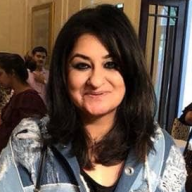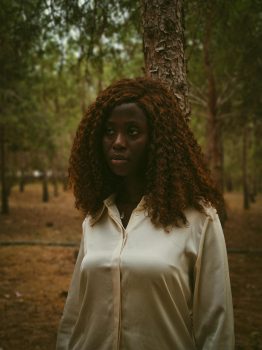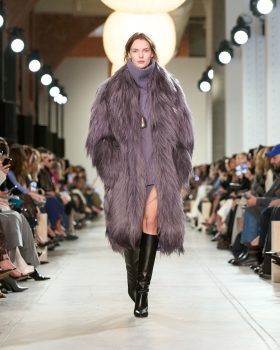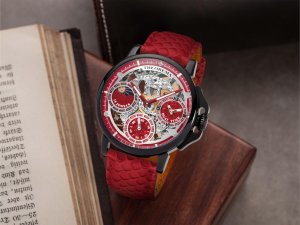Hyundai India Couture Week, an FDCI Initiative and in partnership with Reliance Brands, took place from July 24 to July 31, 2024. The event witnessed the participation of fourteen luxury fashion brands.

JJ Valaya at Hyundai India Couture Week
From Abu Jani Sandeep Khosla to Amit Aggarwal, Dolly J Studio, Falguni Shane Peacock, Gaurav Gupta, JJ Valaya, Kunal Rawal, Rahul Mishra, Jayanti Reddy, Rimzim Dadu, Rose Room by Isha Jajodia, Siddartha Tytler, Suneet Varma and Tarun Tahiliani, all the couturiers showcased collections that were timeless, globally relevant and ethically made.
India Couture Week commenced in 2008 when Sunil Sethi, upon being elected as the president of the Fashion Design Council of India (FDCI), recognised the need for a dedicated platform to highlight the craftsmanship and design aesthetic of Indian fashion. This initiative aimed to provide Indian artisans and fashion designers with the recognition and space they deserved. In 2010, the increasing prominence of Delhi-based designers and fashion houses led to the event being held in the nation’s capital. The city has since remained a hub for luxury retail and entrepreneurial activity.
India Couture Week, since its inception, has celebrated slow fashion, an approach to the design, production and consumption of apparel and accessories that focuses on protecting people and the planet. Let’s check out some of the participating fashion designers who made an impact at the 17th edition of Hyundai India Couture Week.
Rahul Mishra
From the first look, it was evident that ‘Nargis’ By Rahul Mishra at Hyundai India Couture Week was in sync with his vision of bringing together people, process and craft from remote parts of the nation to transform centuries old artisanal craft into contemporary, globally relevant looks.

Rahul Mishra at Hyundai India Couture Week
The first Indian fashion designer to win the Woolmark Prize at Milan Fashion Week in 2014 and the first to showcase at Paris Haute Couture Week in January 2020, Rahul Mishra champions slow fashion. His eponymous luxury label -with a robust national and international distribution channel- finds its genesis in sustainability. Speaking of which, ‘Nargis’ took over eight months to complete with over 1,200 embroidery artisans from villages across the country, working on the collection. Because, he continues to focus on grass root empowerment and on cultivating a circular economy for the craft communities.
Classic bridal silhouettes were showcased at Hyundai India Couture Week with the artistry of a global design aesthetic. It was indeed remarkable to witness, how the designer’s usage of ancient Indian hand embroidery techniques like aari, bugle beads, kundan, freshwater pearls, nakshi and pita work endeavours to continue encouraging the reverse migration of embroidery artisans from densely populated sub-factory setups in the metropolises to their communities in the villages.
The fashion brand continues to forge ahead. In 2022, Rahul Mishra inked a deal with Reliance Brands Limited through a 60:40 Joint Venture, to co-create a global brand, which would anchor his design expertise with Reliance Brands Limited’s mastery of luxury and retail management.
JJ Valaya
This season, the narrative weaves Indian textile and silhouette with influence from his three expressions — Istanbul, Isfahan and Delhi. The inspiration manifests into sumptuous bridal, festive and occasion wear that delivers Valaya decadence and craftsmanship in spades.
Titled ‘Muraqqa’, the sixty-piece collection of opulent silk and velvet lehengas, saris, sherwanis, Nehru jackets and bundgalas were accessorized were adorned with unique hand embroidery techniques and prints enhanced with aged metal, silk threads, beads and crystals in seasonal colors.
It brought to mind a past conversation with the couturier where he had explained, “India has a strong indigenous couture market, one that primarily revolves around the spirit of celebration. Our use of heritage craft, such as weaves and vintage embroideries, is combined with modern styling. If you invest in the label, you invest in an heirloom; tweaked, but an heirloom nevertheless.”
A celebrated couturier, a founding member of the Fashion Design Council of India and the first global brand ambassador of Swarovski, JJ Valaya is popularly referred to as the Monarch of Indian Fashion. Today he has several hundred hand embroidery artisans and master craftsmen working in his headquarters. He remains one of the biggest names in the bridal trousseau and haute couture segment in India and was one of the first Indian labels to invest in sampling, research and development at House of Valaya in Manesar.
Rimzim Dadu
Rimzim Dadu is acclaimed as a futurist, sculptor and artist. A fashion designer acclaimed for using traditional and unorthodox materials with handcraft techniques, deconstruction and re-engineering. This season, Dadu’s haute couture shimmered on the models’ body like liquid mercury. Drawing from Baroque architecture, the fashion designer who reinvented the ancient technique of cord work by threading silk with nylon coated steel wires, fused technology and design yet again to create stunning occasion-wear.

Rimzim Dadu at Hyundai India Couture Week
Design evolution fuels creativity, supports sustainability and embraces technological progress—principles that are central to everything Rimzim Dadu creates. The couture collection honored her eighteen-year career in fashion design by revisiting and updating her earliest creations while showcasing her love affair with textile experimentation. Made using metallic yarn, steel wire and zardozi, the exaggerated silhouettes of Dadu’s corset tops, lehengas, saris, sherwanis and tuxedos ensured each look was a statement piece.
Rimzim Dadu graduated in fashion design from Pearl Academy New Delhi and launched her label “my village by Rimzim Dadu” which she later shortened to Rimzim Dadu. She then applied for Lakmé Fashion Week’s Gen-Next show and made the cut with her unorthodox materials. “I love exploring new materials and cords as an element help me re-engineer textiles almost like Lego—where I can disintegrate a material into cords and then use them to bring the textile back together. This changes the original nature of the material and results into something completely different” she tells Vogue. “For example, a material like steel becomes very soft and malleable and the soft chiffon becomes structured and grunge.”
Suneet Varma
London School Of Fashion alumnus Suneet Varma spent years honing his craft with Nicole Farhi and Yves Saint Laurent, and an effortless glamor defines his aesthetic. Having carved a niche in Indian couture, it’s no wonder his showing titled ‘Nazm’ at India Couture Week — with emphasis on lightweight classics — was magnificent in its craftsmanship.

Suneet Varma at Hyundai India Couture Week
As the first looks came out, it was clear that the opulence of textiles, ancient hand embroideries and motifs combined with modern precision was woven into each piece to create a new vocabulary of design. Varma trimmed the volume and focussed on weightlessly constructed of lehengas worn with off-shoulder blouses, draped skirts, capes, ruffled organza shirts and high-waist palazzo pants handcrafted with metallic tissue, organza and chiffon. Gold and silver three-dimensional hand embroidery and foil appliqué, mirror work and sequins, amped up the glamor quotient. ‘Nazm’ was a collection for the global Indian bride.
Few know that Suneet Varma has a strong International presence. He has showcased in Hammer Museum in Beverly Hills, bagged Hollywood films for costume design, and was appointed co-hosted the Indian launch of Omega watches with supermodel Cindy Crawford. Suneet has been awarded Designer of the Year several times by Bollywood Fashion Council in NYC. And, as a consultant, developed designs for fashion houses in Europe and the US, including Donna Karan, Calvin Klein and Nicole Miller.
Tarun Tahiliani
Tarun Tahiliani’s “Otherworldly” showcased his aesthetic of India Modern — a term he is associated with for his contemporary presentation of traditional Indian craftsmanship.
As the first few looks came out, it brought to mind a conversation with the couturier: ‘Men and women who come to us have a clear expectation of the finest quality and intricate technique. That hasn’t changed over time. What has changed is that the bride and groom want exquisite garments, however, with no compromise on functionality. They want to enjoy their own wedding and move around without feeling weighed down. They want to maintain tradition with a modern outlook’.
Indian in character, with no compromise on technique and detailing, Tahiliani trimmed the volume of the lehengas and saris: the collection was the designer’s celebration of lightness and functionality. The menswear stood out with sharp, intricately embroidered sherwanis, bandhgalas and kurtas. But if all that felt like a modern way to deal with bridal-wear, Tahiliani’s mastery of classic couture embellishment meant that opulence was never absent. Each piece was enhanced by traditional crafts like Kashidakar, Mukaish and Chikankari, Swarovski, aari and zardozi.
In 2021 Aditya Birla Fashion and Retail Ltd acquired a thirty three per cent stake in Tarun Tahiliani’s luxury couture business, with an option to increase to fifty one percent. “The next big leap for the brand was to take our craftsmanship and expertise and offer it to a larger Indian market that knows and values quality and is actively seeking it. I was clear that we needed a partner who could not just help us with this scale, but also have the same dedication to quality and the customer. And that could only have been the Aditya Birla Group…” he said. “I am excited and look forward to this unique opportunity of taking our signature India Modern aesthetic to a broader consumer base across the country.”

Tarun Tahiliani at Hyundai India Couture Week

Jasmeen Dugal is Associate Editor at FashionABC, contributing her insights on fashion, technology, and sustainability. She brings with herself more than two decades of editorial experience, working for national newspapers and luxury magazines in India.
Jasmeen Dugal has worked with exchange4media as a senior writer contributing articles on the country’s advertising and marketing movements, and then with Condenast India as Net Editor where she helmed Vogue India’s official website in terms of design, layout and daily content. Besides this, she is also an entrepreneur running her own luxury portal, Explosivefashion, which highlights the latest in luxury fashion and hospitality.











